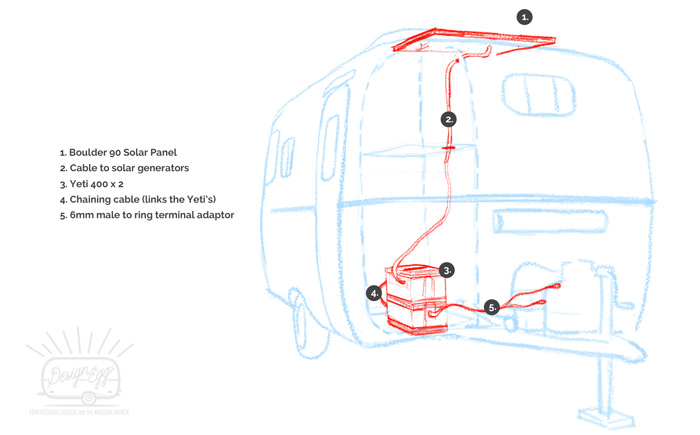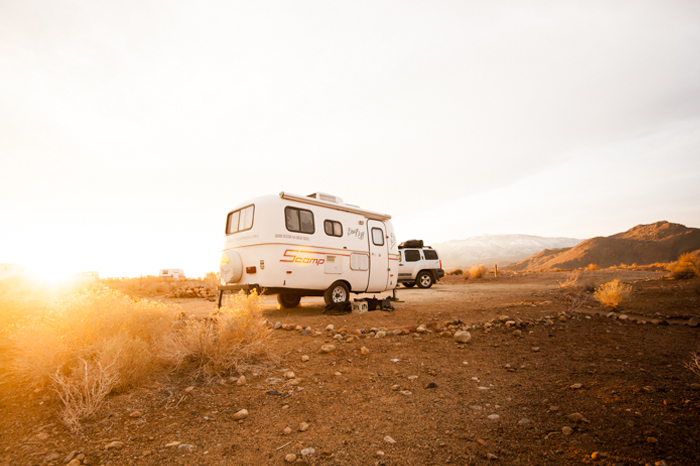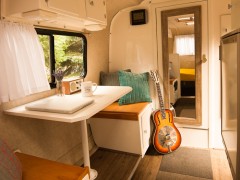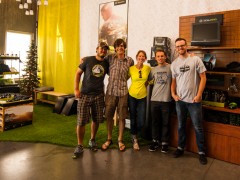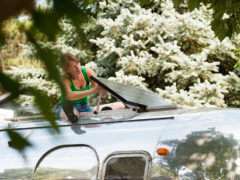Last October we visited the Goal Zero HQ in Bluffdale, Utah. We were in contact with them with regards to our project, our power needs, available real estate on the roof for a panel, and which products would meet our needs.
Primarily, we needed to be able to charge our computers, phones, and batteries—but ideally we would also have enough leftover power for a few small lights, our exhaust fan, and a small RV dehumidifier. After speaking with them, we decided that the Yeti 400 solar generators and a single Boulder 90 panel on top would suffice.
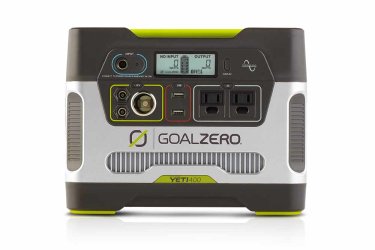
Once we picked out the necessary items from their warehouse store, we parked the trailer out back and talked over our install plan. Like any project, there were a few issues which would make the install tricky—but possible. First, due to inherent space limitations, the location for the roof panel necessitated it be installed on the front-most portion of the roof – above our closet/bathroom and in front of our heater/ac unit. Because of this, the antenna for a since-removed TV had be be taken off. No sweat!
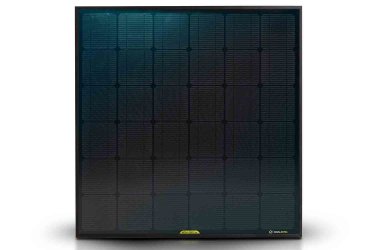
The other consideration was the curvature of the Egg. Due to it’s shape, our trailer has only a few spots where there’s an actual flat surface upon which to attach a panel. So in order to connect the four metal brackets to the roof, we needed some level spots and some clearance underneath the panel for wiring. It was close, but we ended up making enough space by stacking strips of 3M VHB tape to give us the height we needed. In the end, the we found a position on the roof for the panel that would safely accommodate everything.
In all, we had two spots where drilling through the fiberglass was required: on the roof, and in the front near the hitch. At first I was a little nervous putting a 1″ circular hole into the pristine shell of our home, but once it was done and the proper finishes were added to the holes, we were both put to ease.
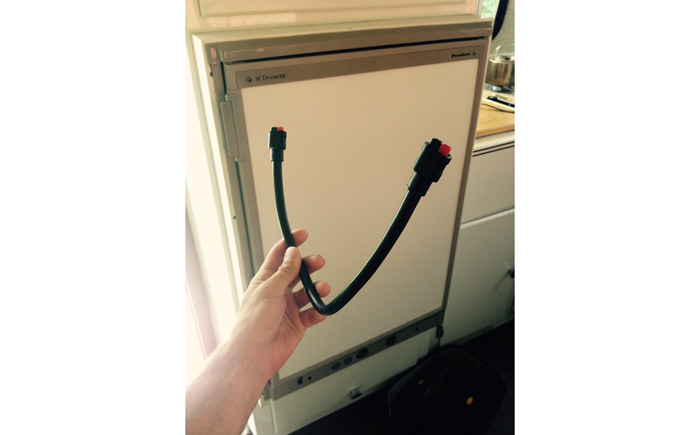
With the plug-and-play design of the generators to panel – we were ready to go quickly once all the measuring and re-measuring was done. We basically wired the panel down through our bathroom, then across into our closets near the door – passing from the upper into the lower where the generators would reside. In this low-lying spot, we had enough airspace around the generators in case they created heat and enough floor space to accommodate them. Additionally, it was a perfect spot to wire them into the on-board RV battery just outside this small space. See the diagram I sketched below for a basic understanding of the install.
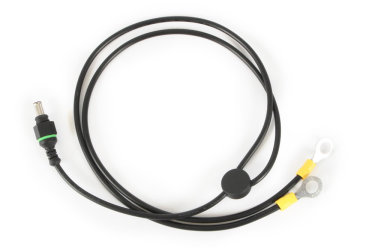
How much charge do we get from everything? This is a very complicated question with many factors at play. At the time we were first using the system, we were in a deep canyon in Utah and our available solar was extremely limited. We were also heavily shaded by adjacent trees. To make matters worse, we had very cold night-time temps. This added up to near impossible, or very slow charging. During this period, we had also dismal cell service – which required that we head into town pretty frequently. Since we had a hard time working in the trailer using the charge from solar, we would drive into town and work at the library. Because the Yeti’s are small enough to bring into cafe’s and such places, we would just bring them in and charge them while we powered our computers from the wall outlets. That way, when we returned home later on, we’d have two charged generators for any additional work we might need to do offline.

Once we left this area in Utah, charging got much easier and we really started to see a major improvement in charge times. We also learned that charging our laptops while using them wasted a lot of power—which it explicitly mentions in the manual. Now, whenever we have a charged generator, we power down the computer or at least sleep them, and wait til they are fully charged. The charge time for an empty laptop is probably 45 minutes-hour if it’s turned off or in sleep mode. We can get 4 or more charges from each of our Yeti’s when they are full. The Yeti’s themselves take about 5 hours or so to charge from a wall outlet – and their solar charge times vary greatly on weather conditions and the angle of the panel to the sun. Since our panel had to be installed flat on our roof, we have a hard time maximizing input from the sun—but it still does quite well despite.
If we had to do it all over again, or at least modify our setup, we would definitely want the option to tilt our panels. Doing this makes a huge difference in watts taken in from the sun and makes the whole system more efficient. However, even as-is, we are super happy to have plugged in at a campsite only twice this entire year! We’ve been drawing enough power from the sun to keep us productive when weather conditions permitted. When we had cloudy or rainy days, we were at cafes or libraries getting work done. No problem.
All in all, we are happy with the Yeti’s performance and ease of use. They are very portable – albeit a little heavy, and can pretty easily be brought anywhere for wall charging or use. Overall, transitioning to solar use daily has been really freeing. It’s still quite a marvel to power your phones and other devices purely from an invisible source of power – we are sold!
